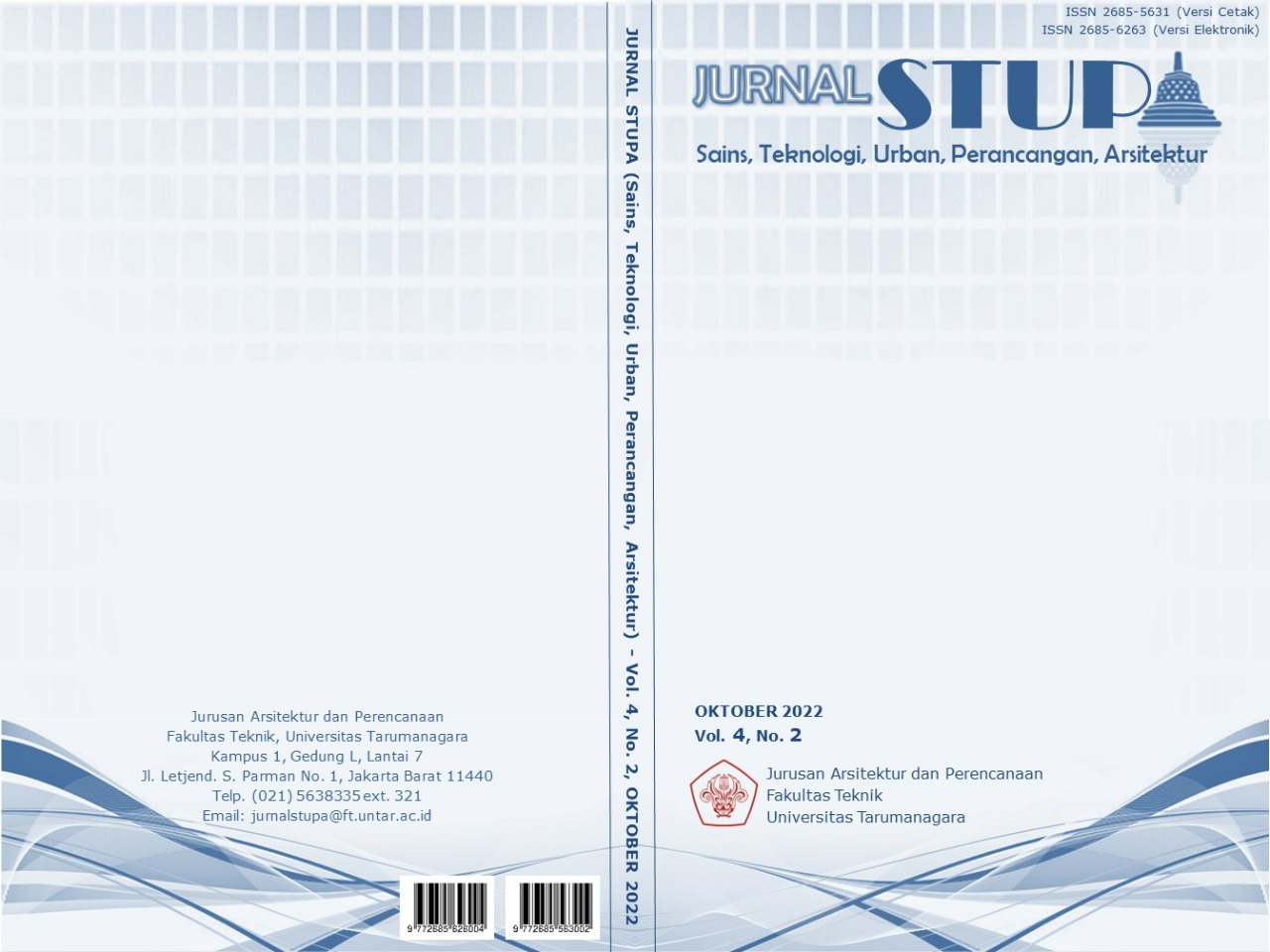SENEN HALL: REVITALISASI GEDUNG GRAND THEATRE SENEN
Main Article Content
Abstract
Grand Theater Senen (GTS) is one of the first cinemas in Jakarta. Now the cinema is no longer tied to a single building, which reduces the relevance of a theater building and causes degradation in the use of this building. The misuse of the building as a blue film screening venue, prostitution and drug sales were the reasons for its closure in 2017. It is located at Simpang Lima Senen, one of the busiest crossroads in Jakarta. Inheriting the unique Art Deco style in its design, GTS which has been around for a long time since the 1970s is a silent witness to developments and tangible evidence of changes in Senen. However, after the fifth year, there has been no follow-up or plan from the government or related parties to revitalize the Grand Theater Senen building. Through an adaptive reuse approach, the Grand Theater Senen building is promoted to complement the spatial, social, programmatic and demographic structures of Senen. Carrying this old building into a modern office with a touch of Art Deco architectural characteristics, it becomes the basic design basis which is further developed as the main feature of the building, which is combined and matched with modern architectural styles, so as to create a harmonious design that combines old and new elements. Continuing the collective memory of Senen as a form of identification of the true identity of the Senen area.
Keywords: Grand Theatre Senen; Revitalization; Adaptive Reuse; Art Deco; Senen
Abstrak
Grand Theater Senen (GTS) merupakan salah satu gedung bioskop pertama di Jakarta. Kini bioskop tidak lagi terikat dengan sebuah gedung tunggal, yang menyebabkan relevansi sebuah gedung theater berkurang dan meyebabkan degradasi dalam penggunaan bangunan ini. Penyalahgunaan gedung sebagai tempat pemutaran film biru, prostitusi dan penjualan narkoba menjadi alasan penutupannya di tahun 2017. Terletak di Simpang Lima Senen, salah satu persimpangan jalan tersibuk di Jakarta. Mewarisi gaya Art Deco yang unik dalam desainnya, GTS yang telah berdiri lama sejak tahun 1970-an menjadi saksi bisu perkembangan serta bukti nyata perubahan di Senen.Namun, setelah tahun kelima, belum ada tindak lanjut atau rencana dari pemerintah atau pihak terkait untuk merevitalisasi gedung Grand Theater Senen. Melalui pendekatan adaptif reuse, gedung Grand Theater Senen dipromosikan untuk melengkapi struktur spasial, sosial, program dan demografi Senen. Mengusung bangunan tua ini menjadi sebuah perkantoran modern dengan sentuhan ciri khas arsitektur Art Deco, menjadi landasan dasar desain yang dikembangkan lebih lanjut sebagai ciri utama bangunan, yang dipadukan dan dicocokkan dengan gaya arsitektur modern, sehingga tercipta desain yang harmonis yang memadukan unsur lama dan baru. Melanjutkan memori kolektif Senen sebagai bentuk identifikasi jati diri kawasan Senen yang sebenarnya.
Article Details

This work is licensed under a Creative Commons Attribution-NonCommercial-ShareAlike 4.0 International License.
This work is licensed under a Jurnal Sains, Teknologi, Urban, Perancangan, Arsitektur/ STUPA Creative Commons Attribution-NonCommercial-ShareAlike 4.0 International LicenseReferences
Agung (2022). Wawancara mandiri oleh penulis dengan sekuriti Gedung Grand Theater Senen.
Caves, R. W. (2004). Encyclopedia of the City. Routledge. p. 6.
Chan, G (2018). Approaches to Adaptive Reuse in Architecture. Diakses pada 26 Juni 2022 dari https://www.youtube.com/watch?v=3Uymv-hch9E&t=193s
Fitch, J.M. (1992). Historic Preservation: Curatorial Management of The Build World. New York: Mc Graw Hill Book Company
Foster, N (2020). Buildings are not lifeless objects, it’s time to treat them as such. Diakses pada 26 Juni 2022 dari https://thefifthestate.com.au/articles/buildings-are-not-lifeless-objects-its-time-to-treat-them-as-such/
Lisa (2022). Wawancara mandiri oleh penulis dengan resepsionis Hi Hotel Senen.
Mehrotra, R. (penyunting) (2004). Everyday Urbanism: Margareth Crawford vs. Michael Speaks. Michigan Debates on Urbanism. p. 18.



